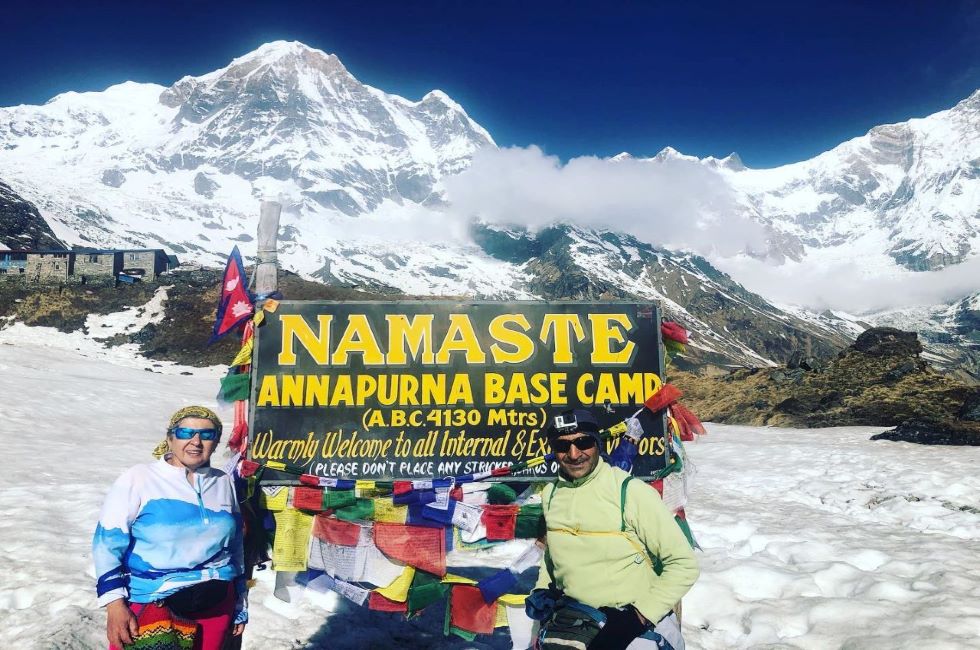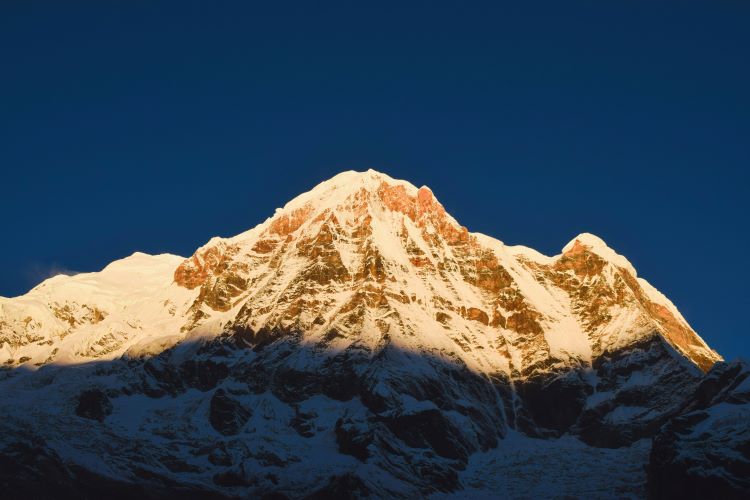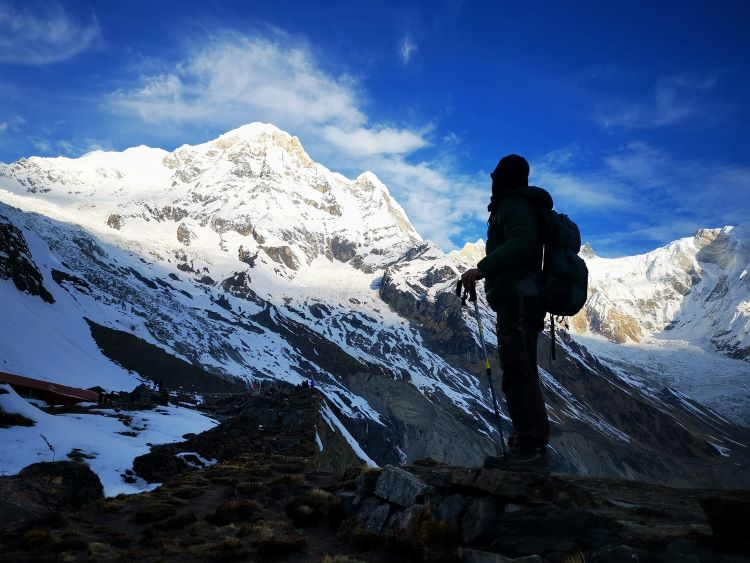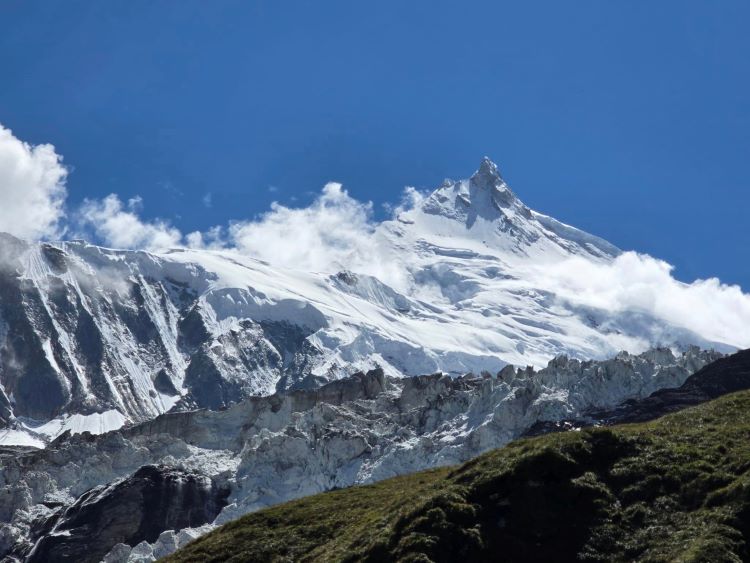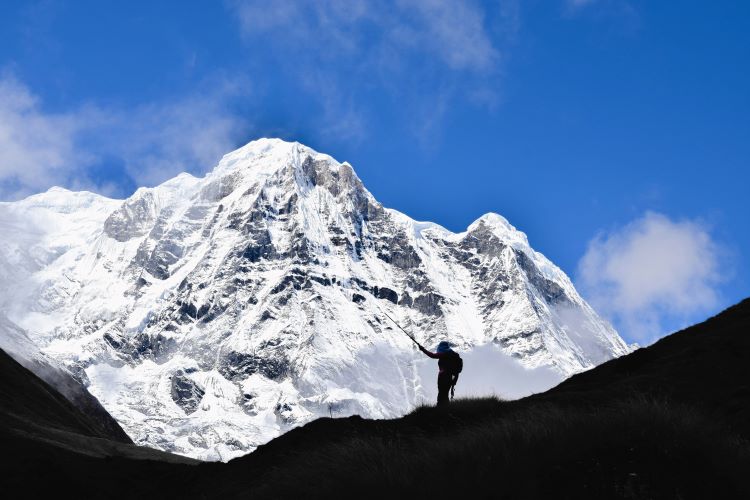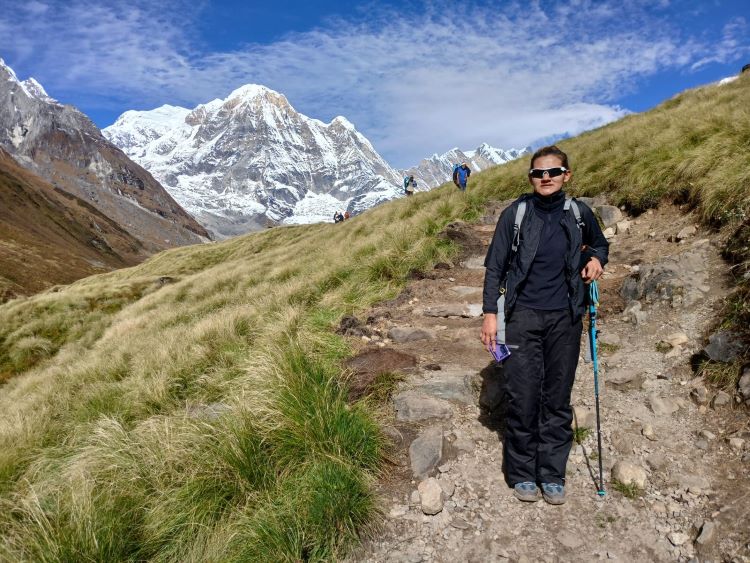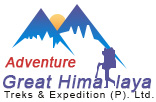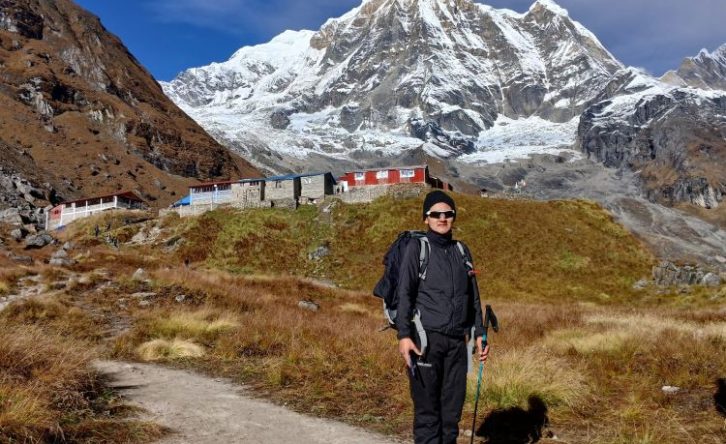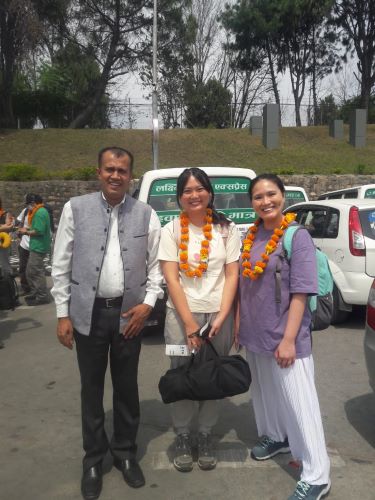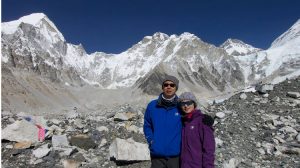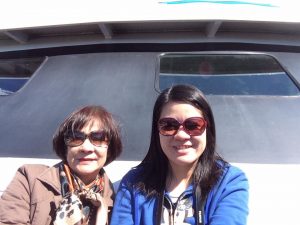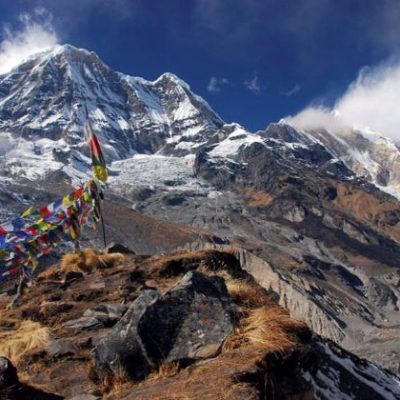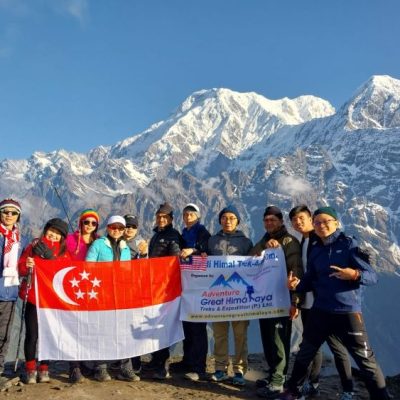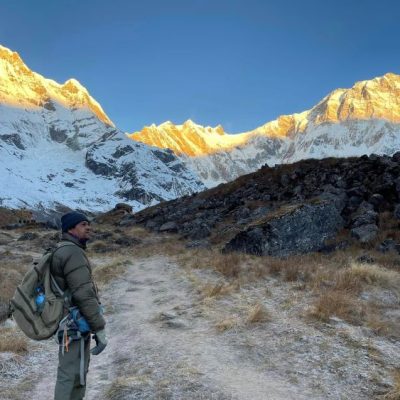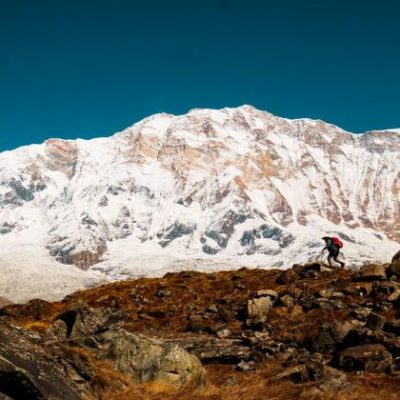Overview
Annapurna Base Camp trek is the exciting journey to the base camp of Mt. Annapurna [8,091 meters , “The tenth highest peak in world” It is is undoubtedly one of the most remarkable Himalayan adventures. This extraordinary adventure to the north-central prospects of the Himalayas follows one of the oldest trekking routes and takes you across the fascinating allurements of the second mainstream trekking route in the country.
Annapurna Base camp Trek ( ABC Trek) promises an incredible and unforgettable experience moving along the captivating landmarks of the Annapurna region. During this trek, you will across the lush forested trails adorned with dotted rhododendron flowers, terraced farms and alpine meadows with incredible mountain vistas on the backdrop. You will also get the opportunity to relish the unique and fascinating culture, traditions, and hospitality of the indigenous Gurung and Magar ethnic groups of the region.
During Annapurna Base camp Trek you will also get the opportunity to explore the fascinating diversity of the Annapurna Conservation Area, which is home to endangered species of flora and fauna like red panda, snow leopard, Himalayan musk deer, Kasmir musk deer, Himalayan black bear, gray wolf, lynx, cheer pheasant, crimson horned pheasant, etc.
Adventure Great Himalaya created 13 days Annapurna base camp trek, the trek take you through of popular Annapurna Himalaya sunrise view point poon hill, if you have limit time, The trek can shorten to 9 days to go directly base camp without poonhill.
Our 13-day Nepal ABC Trek journey starts from Kathmandu (1,400 meters). We’ll travel to Pokhara (823 meters) from Kathmandu either by tourist bus or by flight. The following day, we’ll take a scenic drive to Hile, which takes about 2 hours, and then begin trekking to Ulleri (1,980 meters).
Ulleri is a picturesque village renowned for its local traditions and stunning views of the first Annapurna mountain. From Ulleri, we will trek to Ghorepani (2,850 meters), a famous Magar village, which brings you to the exciting vantage point in the Annapurna region, Poon Hill (3,210 meters). From this hill, you can enjoy the breathtaking, stunning 360° panorama of the Himalayan peaks, like Annapurna, Annapurna South, Annapurna III, Dhaulagiri, Machhapuchhre, Nilgiri, Hiunchuli and several other adjacent peaks.
Moving further in your journey, you will pass through the beautiful high-altitude settlements of Tadapani (2,610 meters), Chomrong (1,951 meters) and Dovan (2,130 meters) before reaching Annapurna Base Camp (4,160 meters) through Machhpuchhre Base Camp (3,720 meters). After soaking in the mystical atmosphere of the Himalayas in this ABC Trek Nepal and exploring two of the most popular base camps in the region, you will begin your descending journey.
From the base camp, you will descend down to Bamboo (2,050 meters) and soak in the natural hot spring at Jhinu Danda (1,700 meters). Then, you drive down to Pokhara and enjoy a leisurely day at this popular tourist destination, which is popular for its serene lakeside views. Them ending your journey on a high note at Pokhara, you will fly back to Kathmandu, enjoying the aerial views of the sparkling Himalayas and lush valleys down below.
Annapurna Base camp Trek is one of the Most Popular beautiful treks in Nepal among other treks as Everest Base camp, Annapurna circuit and Manaslu Trek
ABC Trek Key Of Highlight
- Incredible Sunrise and Sunset view from Poonhill Over Annapurna range.
- Walk through of Local Village and their spectacular lifestyle.
- Overnight stay at the Base camp (4130m) from the see level.
- Stunning landscapes, terraces, lakes, forests and mountain views
- 360 degree views of the Himalayas from base camp.
- Visit the beautiful lake city of Pokhara
Annapurna Base Camp Trek Cost
The Annapurna base camp trek cost ranging from USD 500 to 1250, How ever Adventure Great Himalaya 13 days Annapurna base camp trek cost start from USD 950 per person, The cost for 2 , 3 people group, we organize solo private trek as well, It cost USD 1450, we Adventure Great Himalaya always offer standard package service which make more comfortable to our costumer.
The 13 days ABC Trek package service start from Kathmandu and end to Kathmandu, The price inclusive Permit, guide, porter, meals, ground transport by private vehicle, domestic flight ticket from Kathmandu to pokhara and rerun Kathmandu, standard accommodation in trekking and also in Kathmandu, pokhara,
Annapurna Base Camp Trek Itinerary
Cost Include/ Exclude
What’s include
- Airport / Hotel/ Airport Transportation
- 2 Nights 3 star Hotel in Kathmandu and Pokhara with breakfast
- Travel to Pokhara – From Kathmandu / Pokhara and return Kathmandu by flight
- Annapurna Trekking Permit and necessary company documents
- Full board meals on the trek (Breakfast, Lunch and Dinner)
- All accommodations in lodges/tea houses during the trek.
- Trekking Guide :An experienced, helpful and good English Speaking Guide.
- Trekking Porters: One Porter for 2 Trekkers
- Company T-shirt and Trekking map
- Medical supplies (first aid kit will be available)
- All government taxes and service charge.
- Farewell Dinner
What’s excluded
- International airfare and Nepal visa
- Personal Travel insurance and also emergency rescue evacuation
- Lunch / Dinner in City like Kathmandu, Pokhara ( Except farewell diner)
- All the beverage, Bar bills – personal expenses (phone call, laundry service, battery recharge, Hot Shower)
- Tips for Guide, Porter
Equipment List
BAG/ RUCKSACK
- Duffel bag or rucksack
- Day pack
FOOTWEAR
- Weatherproof walking boots or shoes
- Inside footwear (flip flops)
- Multiple pairs of warm socks
CLOTHING
- Warm base layer underwear top and bottoms (woolen or synthetic)
- Light breathable hiking trousers
- 1, 2 t-shirt
- Warm mid layer top (woolen or synthetic)
- Down jacket( -10 to -15)
More detils Packing List
More Trip Info
Best Time to Trek Annapurna Base Camp
The Best time to trek to the Annapurna Base Camp depends according to personal preferences and choices. But, one of the peak seasons for trekking to the Annapurna Base Camp is during the month of September, October, November, March, April, and May.
Autumn ( September, October, November)
The temperature of the Annapurna region during autumn may range between 13-17 degrees. During the day and night, the temperature is comparatively low. One of the best things about autumn is that you may not have to face the problem of rainfall while trekking. Autumn brings clear and dry weather which is the most favorable time of the year.
Spring ( March, April, May)
Spring is the second best time for trekking to the ABC after autumn. During Spring, the weather and temperature of the Annapurna region are warm and humid but not too hot for trekking. Spring is the time when new plants grow and flowers bloom. So, during this time, the surrounding becomes even more beautiful.
If you are trekking in Spring, be prepared for the May rainfall too. Carry appropriate trekking gears when you leave for trekking. Make sure you check the weather forecast before starting your journey.
Annapurna Base Camp Trek Difficulty
The Annapurna Base Camp (ABC) trek is a moderate level difficult trek. The maximum altitude reached is 4,130 meters above sea level. The Trekkers are required to walk average 6–7 hours per day, with some days involving ascents and descents of 600–700 meters along narrow trails
Trekking to Annapurna Base Camp can be more difficult in during the winter months (January and February) due to snowfall and icy trails. During this time, trekkers must be well-equipped with proper gear to ensure safety and comfort trip
Accommodation in ABC Trek
There are plenty of lodges and teahouses along the Annapurna Base Camp (ABC) trek. Most lodges offer private rooms with two separate beds, comfortable mattresses, pillows, and warm blankets. In some locations, you may find lodges with private bathrooms. However, during peak season, especially in the base camp area, you may need to share a room for 2–3 nights, as lodges often have dormitory-style rooms with 4–5 beds.
Finding accommodation in the ABC trek during peak season is hard in some places. However, we can arrange accommodation for any season. You must be aware of the fundamental facilities accessible in that location, such as pricing, sanitation, teahouses, camp lodging, and specific route.
The route to Annapurna Base Camp is well-worn. There you find several tiny villages appear along the trail where you encounter bazillion teahouses and have lunch breaks. get more details here ow is the Accommodation in ABC Trek
Trip Map
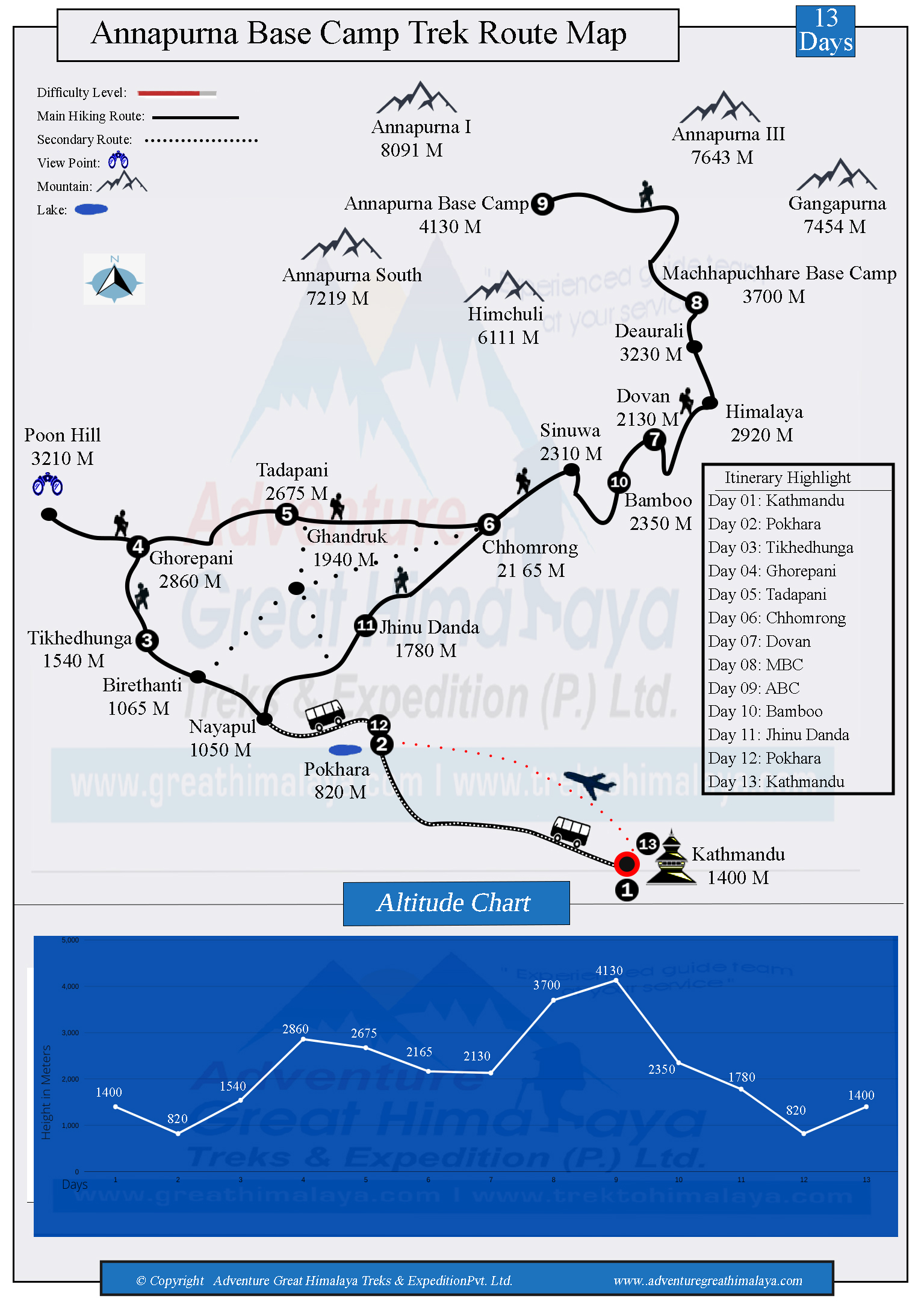
Gallery
